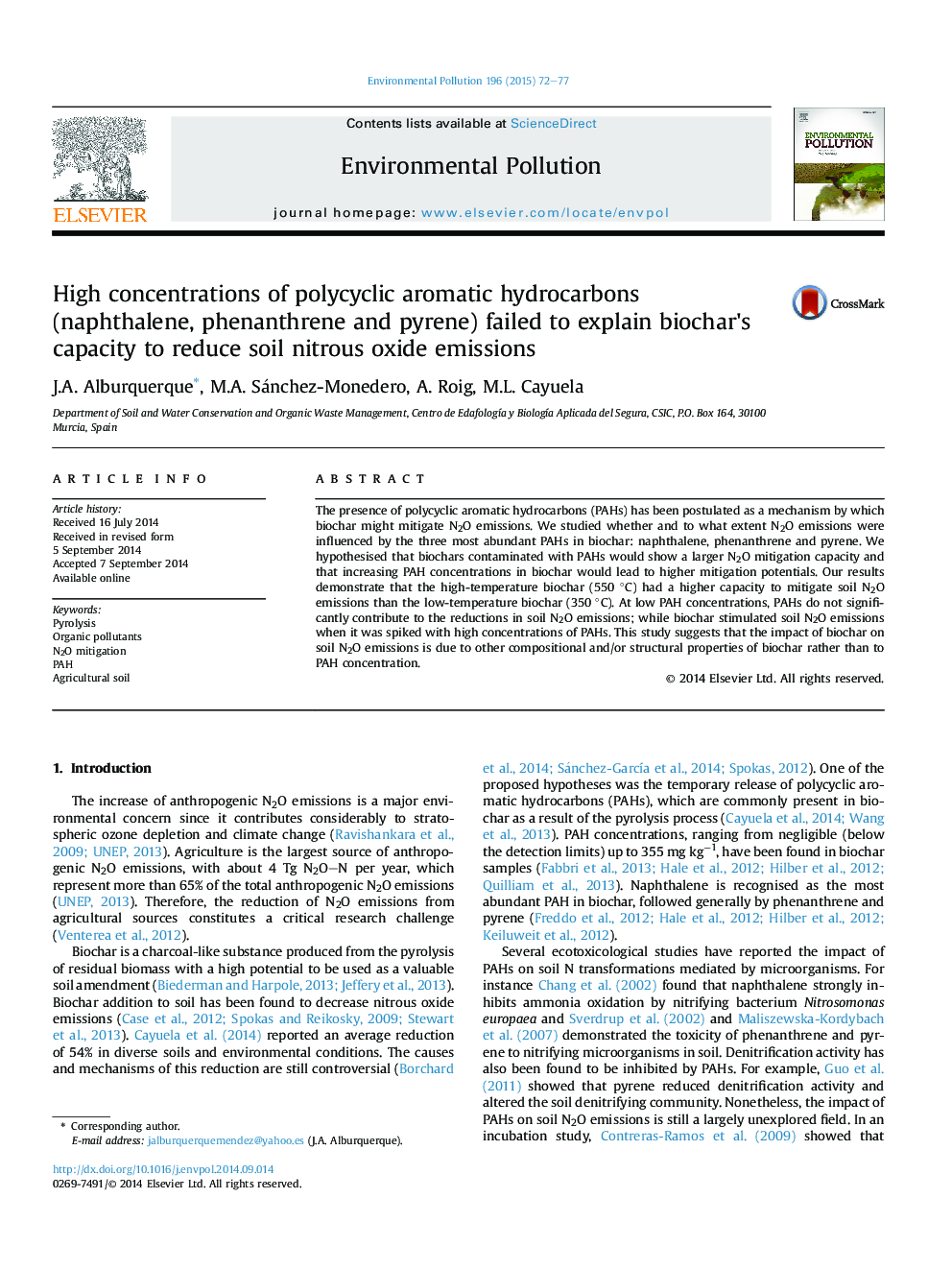| Article ID | Journal | Published Year | Pages | File Type |
|---|---|---|---|---|
| 6317881 | Environmental Pollution | 2015 | 6 Pages |
Abstract
The presence of polycyclic aromatic hydrocarbons (PAHs) has been postulated as a mechanism by which biochar might mitigate N2O emissions. We studied whether and to what extent N2O emissions were influenced by the three most abundant PAHs in biochar: naphthalene, phenanthrene and pyrene. We hypothesised that biochars contaminated with PAHs would show a larger N2O mitigation capacity and that increasing PAH concentrations in biochar would lead to higher mitigation potentials. Our results demonstrate that the high-temperature biochar (550 °C) had a higher capacity to mitigate soil N2O emissions than the low-temperature biochar (350 °C). At low PAH concentrations, PAHs do not significantly contribute to the reductions in soil N2O emissions; while biochar stimulated soil N2O emissions when it was spiked with high concentrations of PAHs. This study suggests that the impact of biochar on soil N2O emissions is due to other compositional and/or structural properties of biochar rather than to PAH concentration.
Related Topics
Life Sciences
Environmental Science
Environmental Chemistry
Authors
J.A. Alburquerque, M.A. Sánchez-Monedero, A. Roig, M.L. Cayuela,
